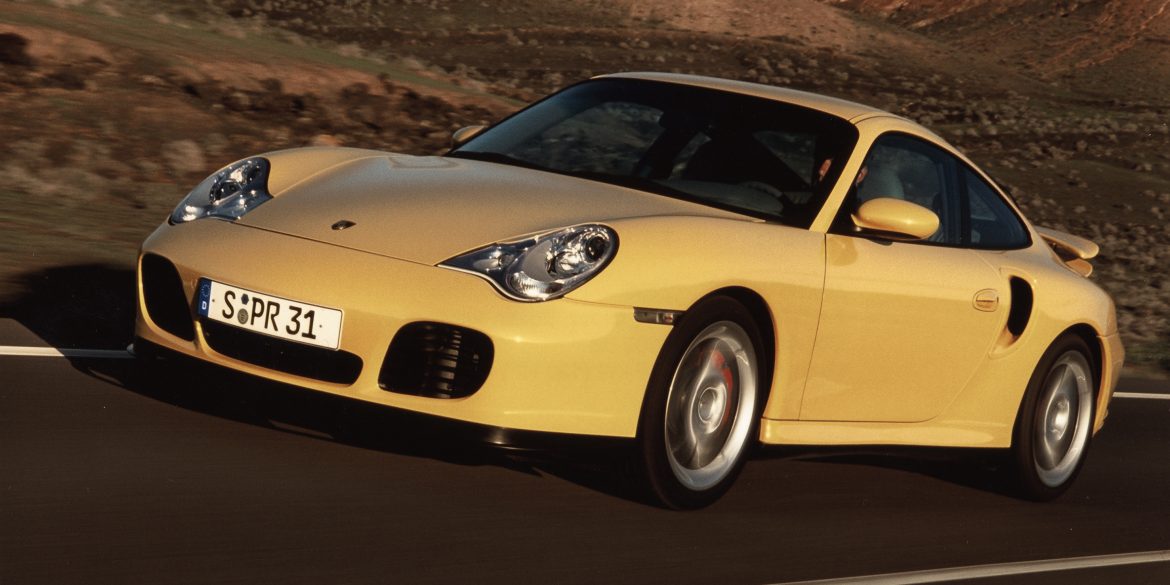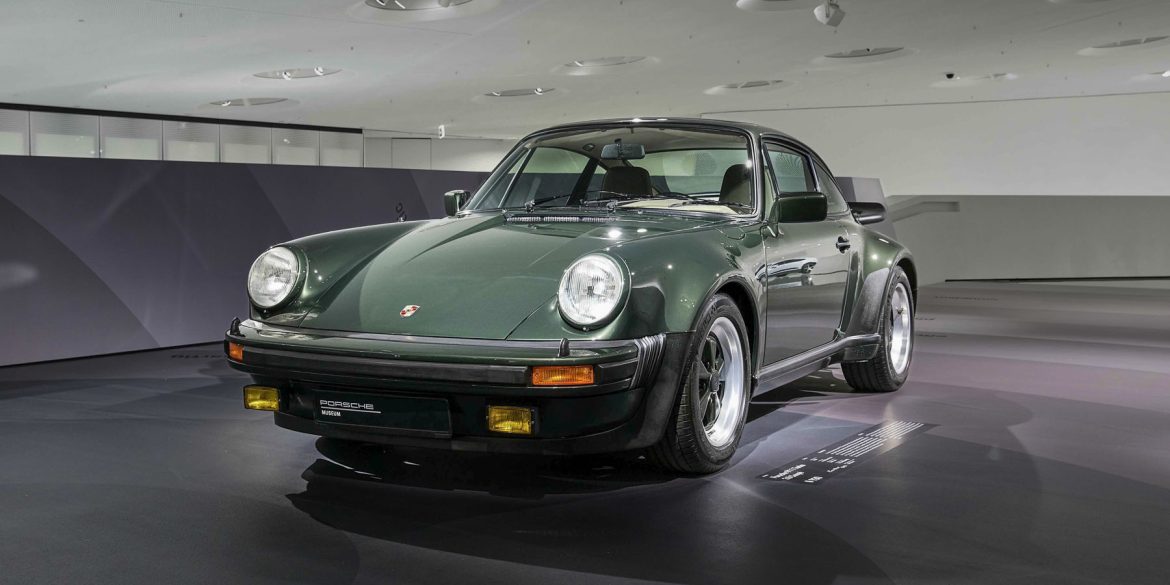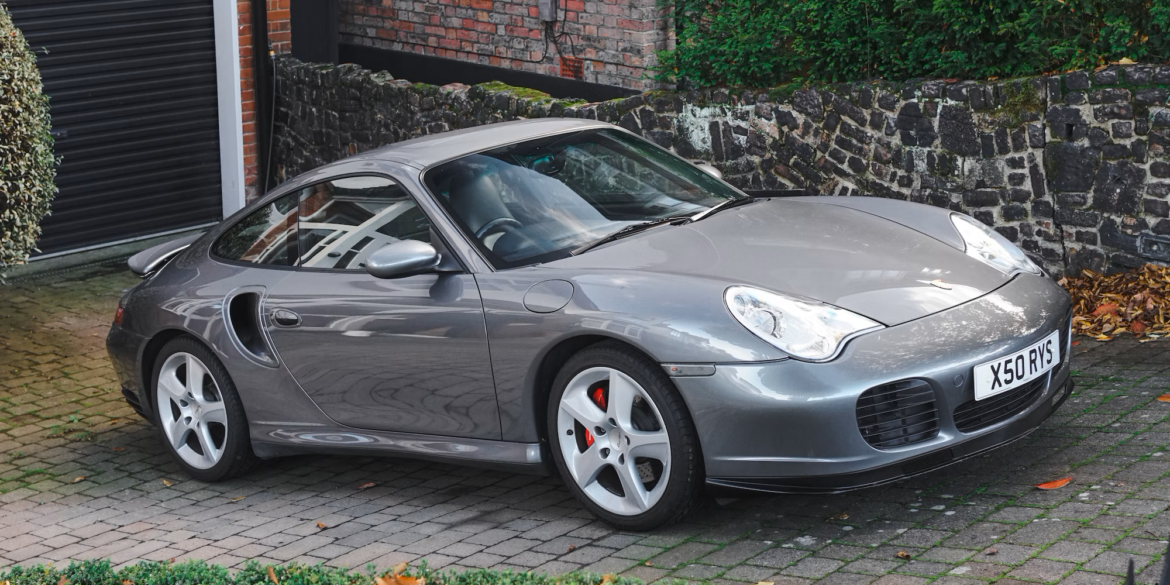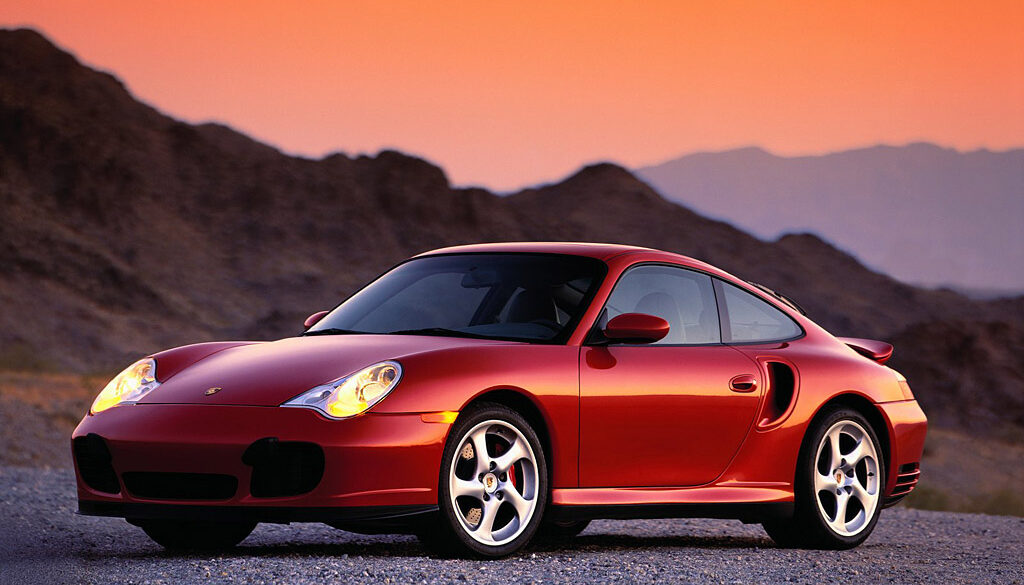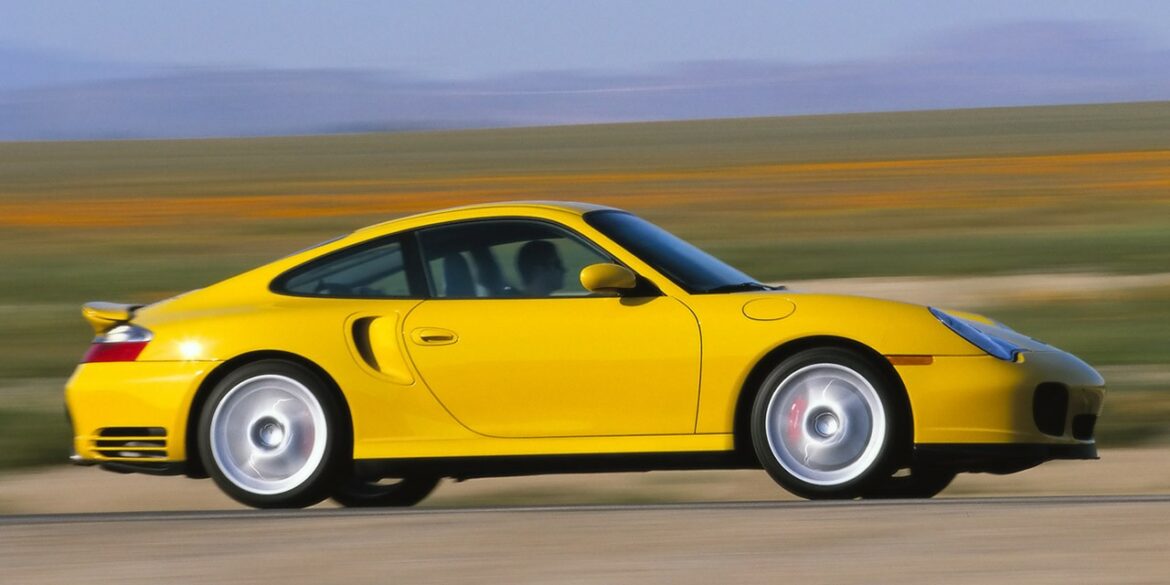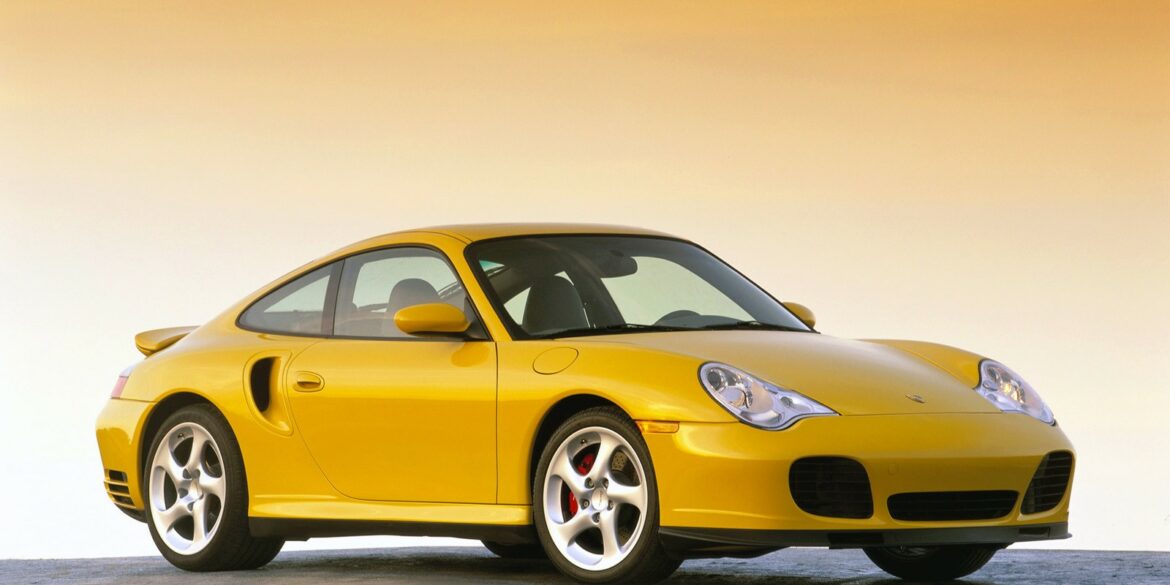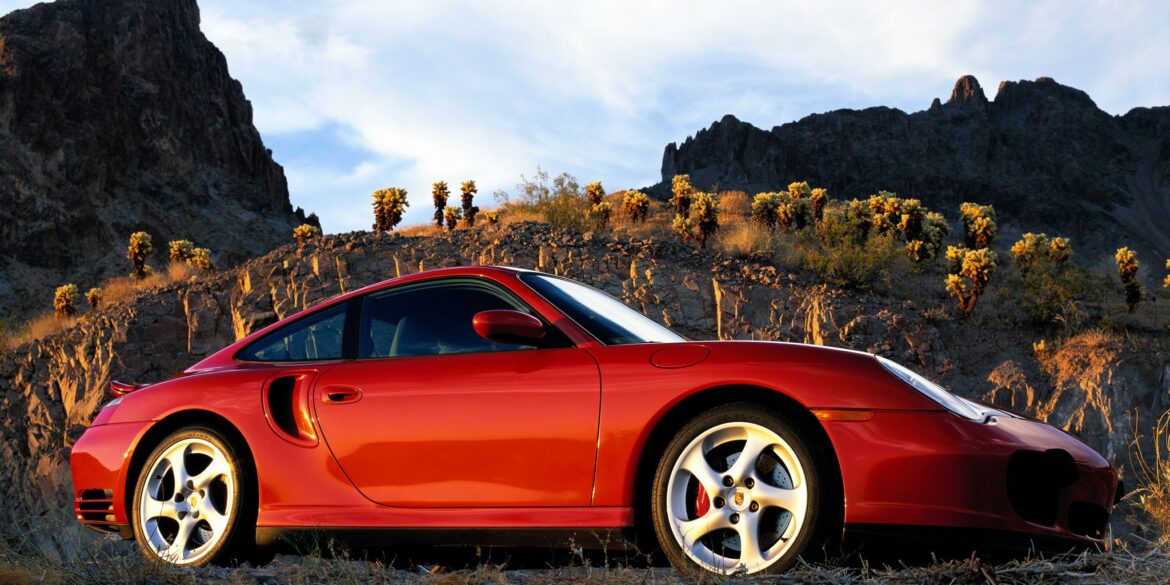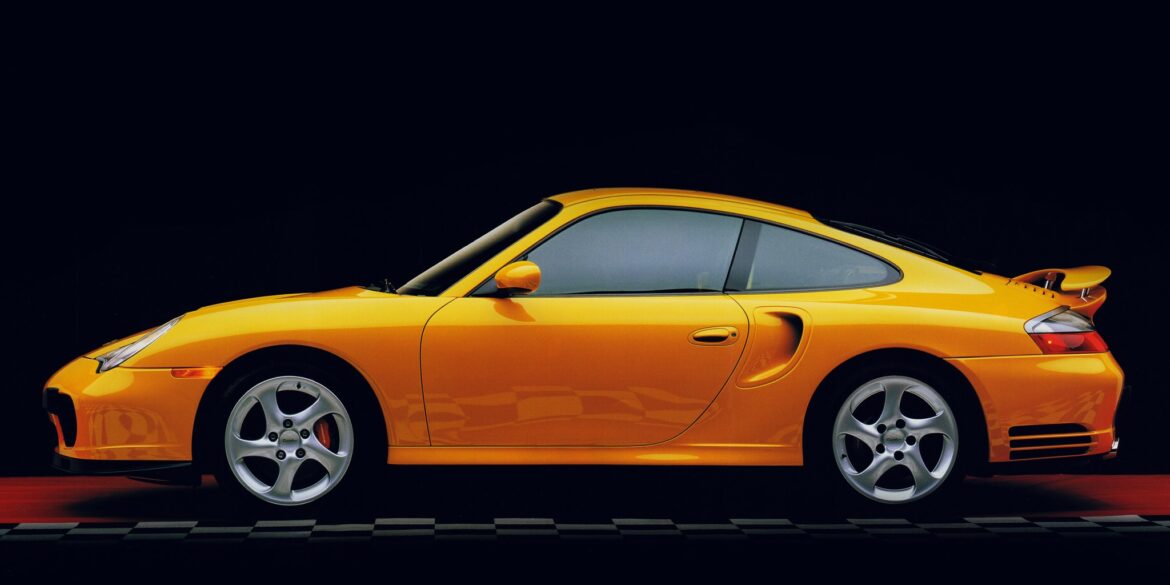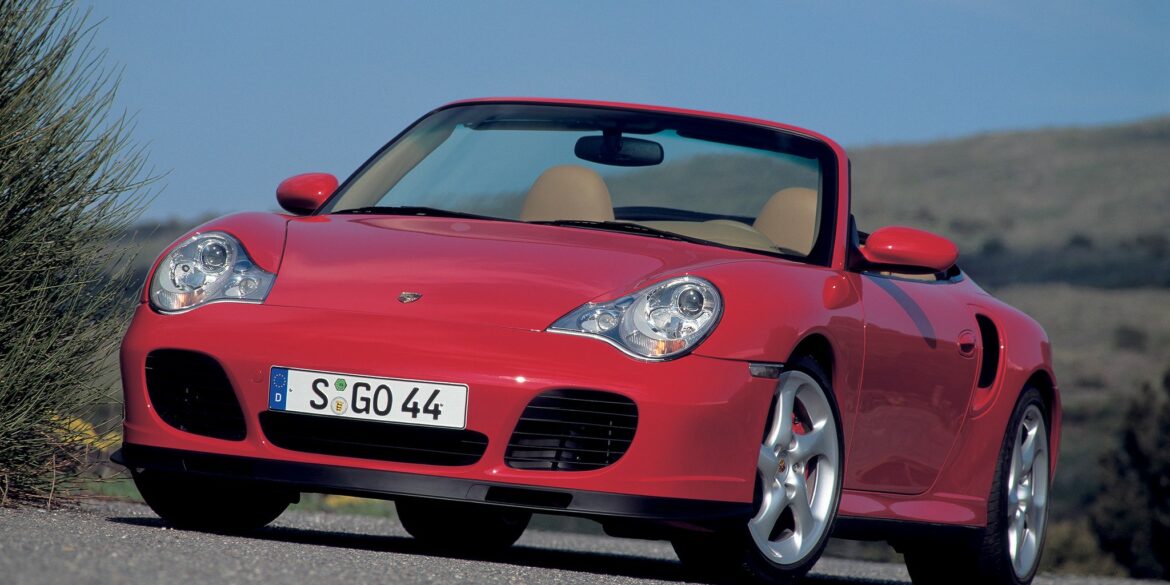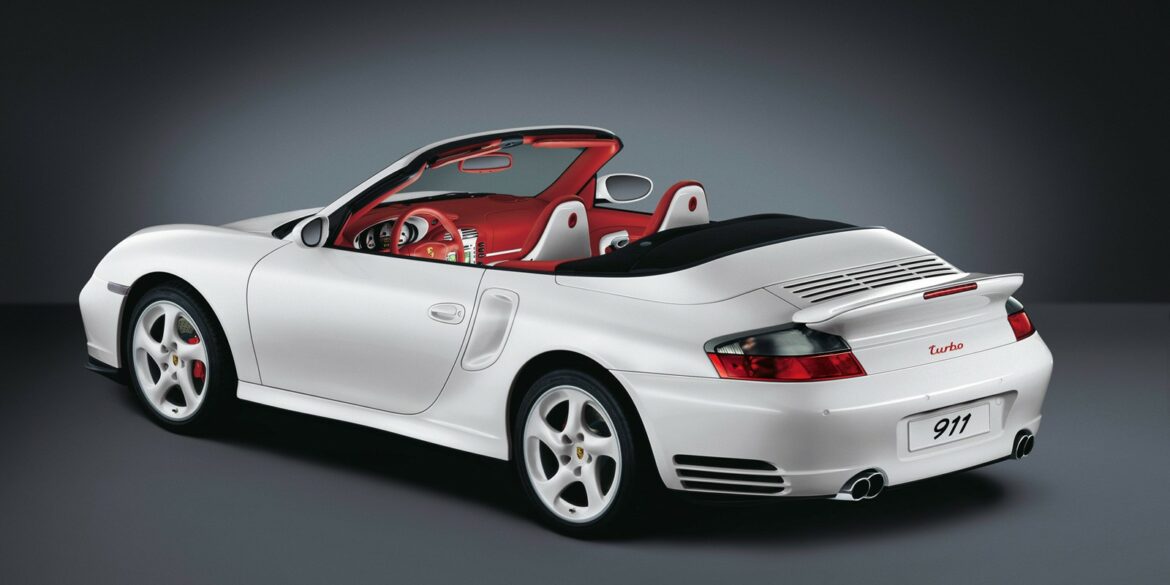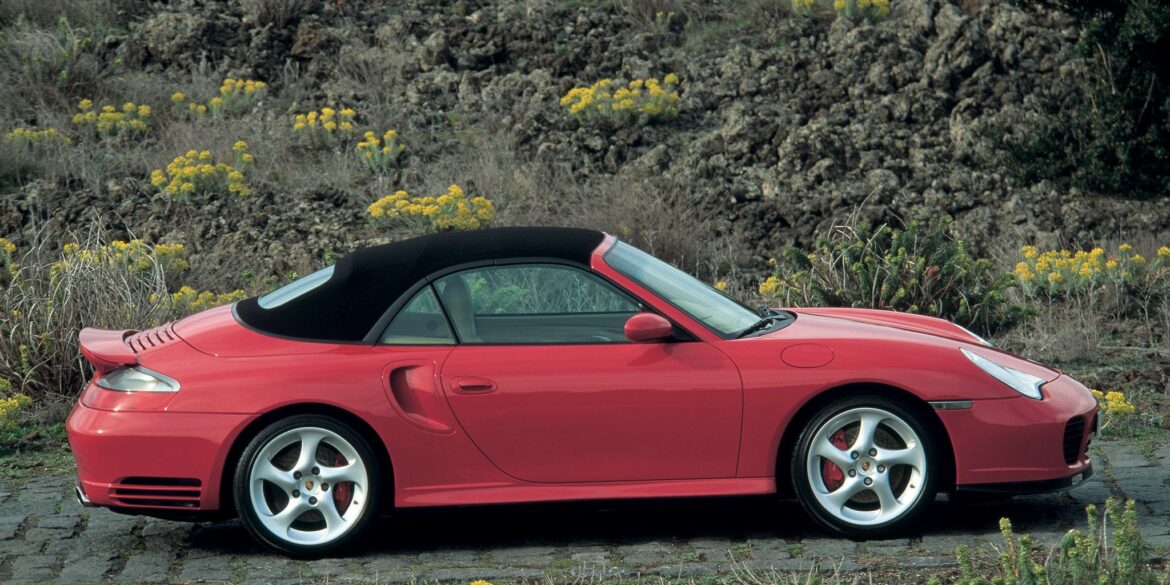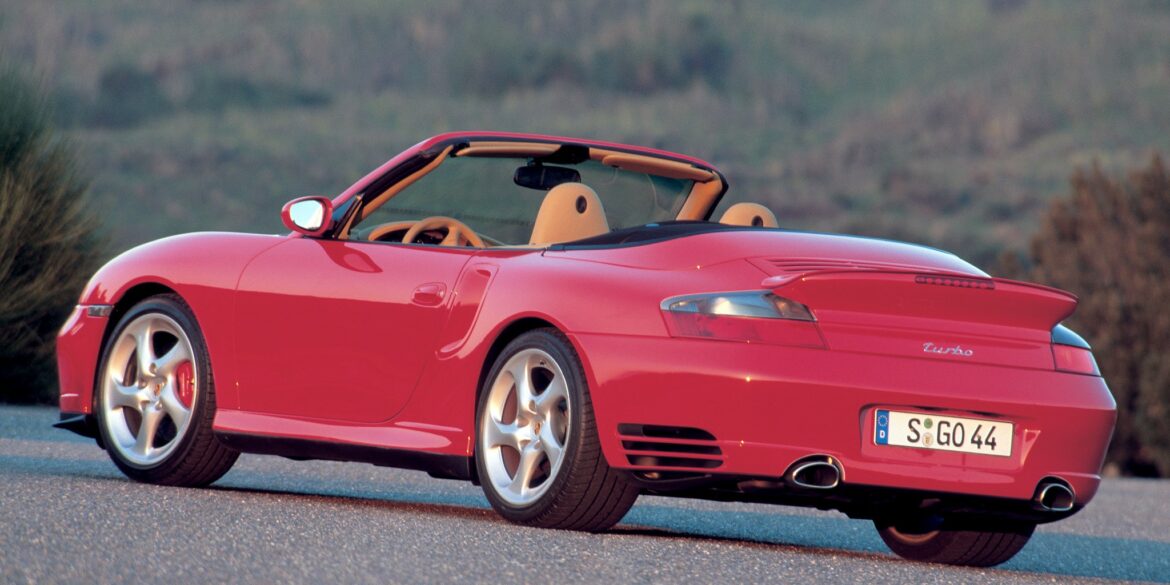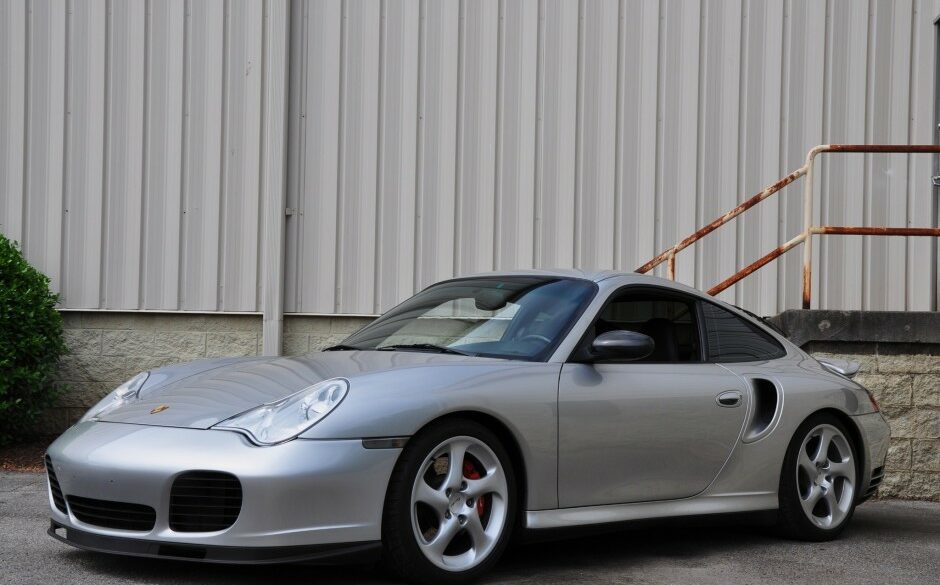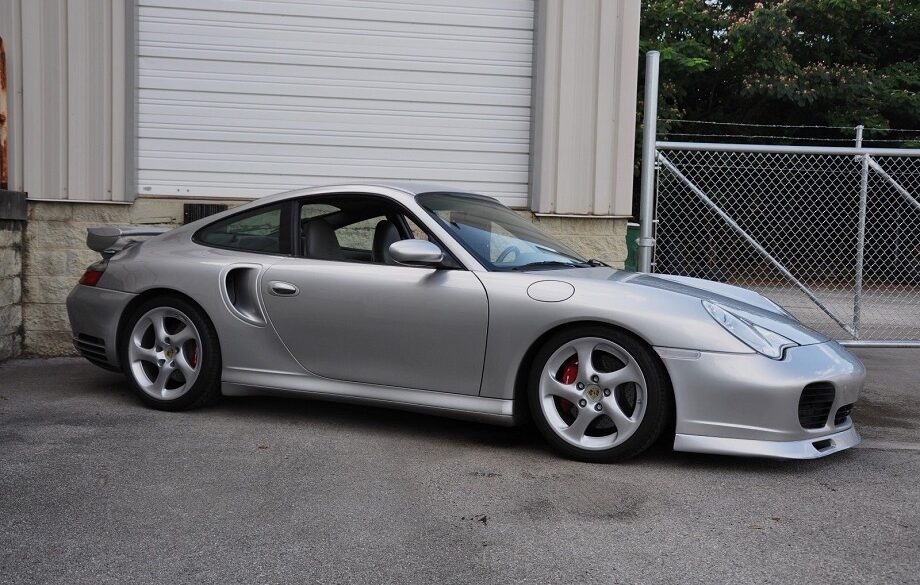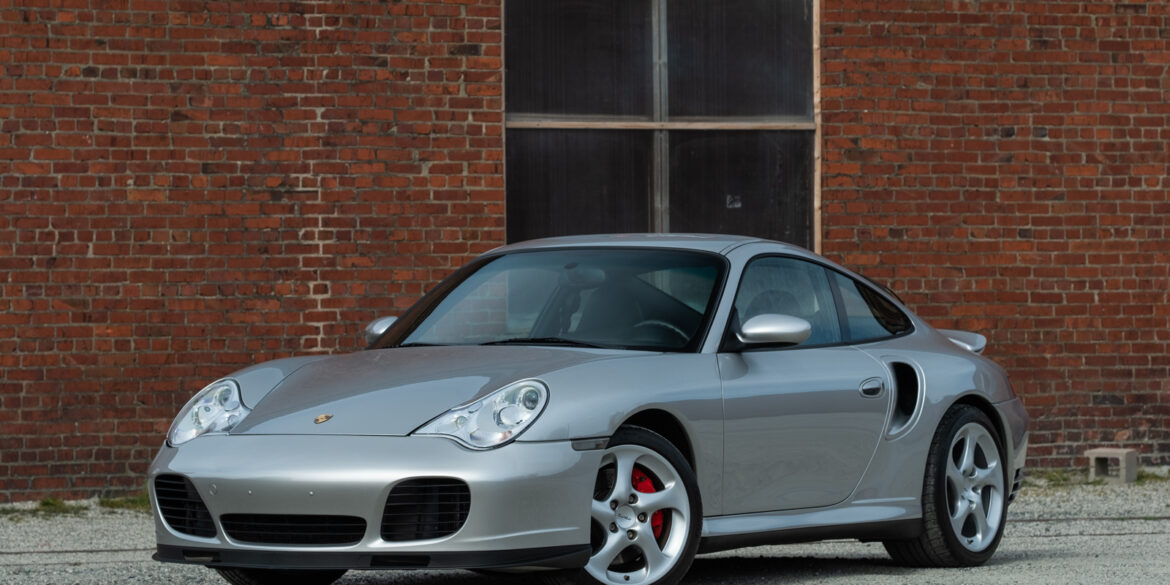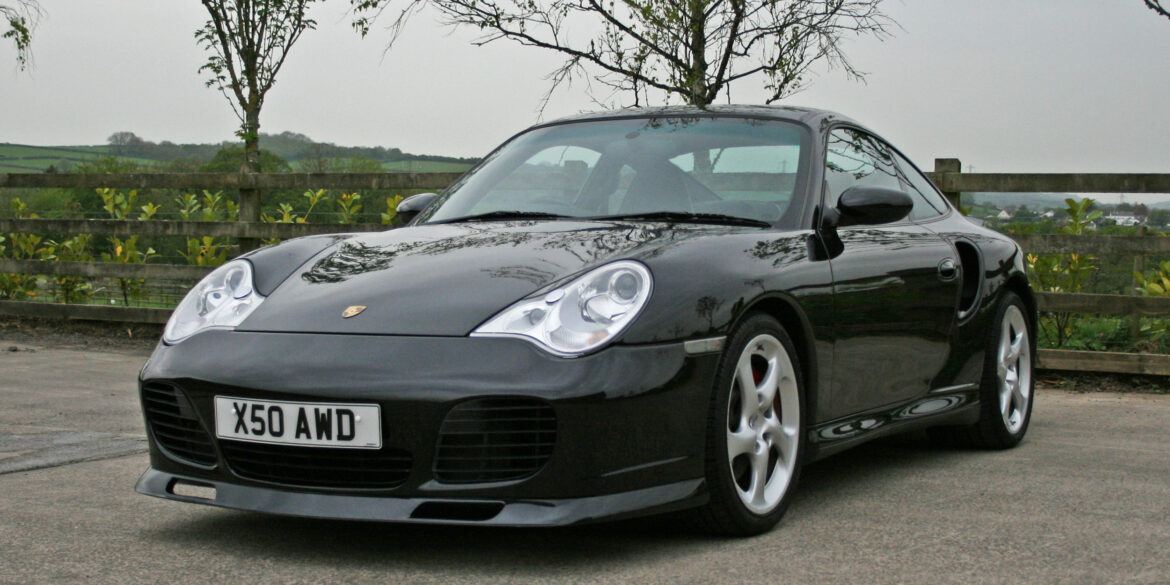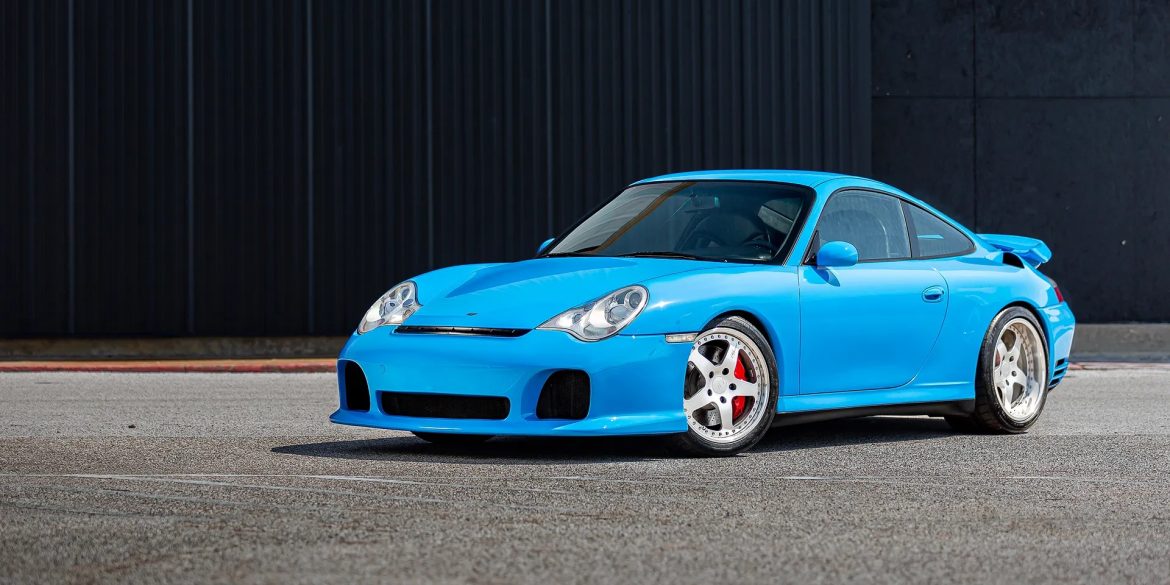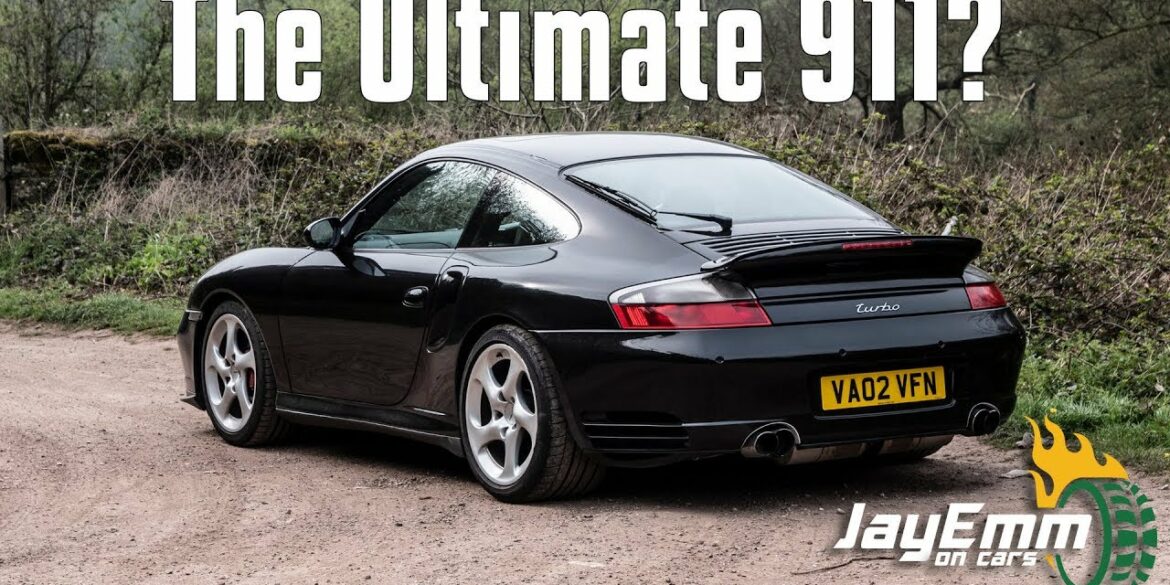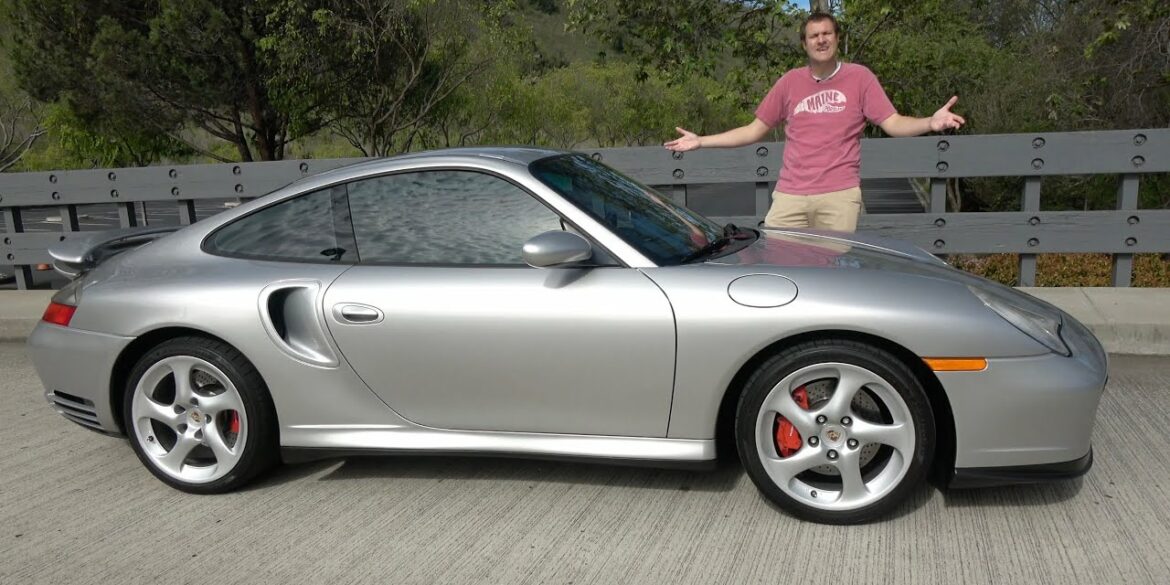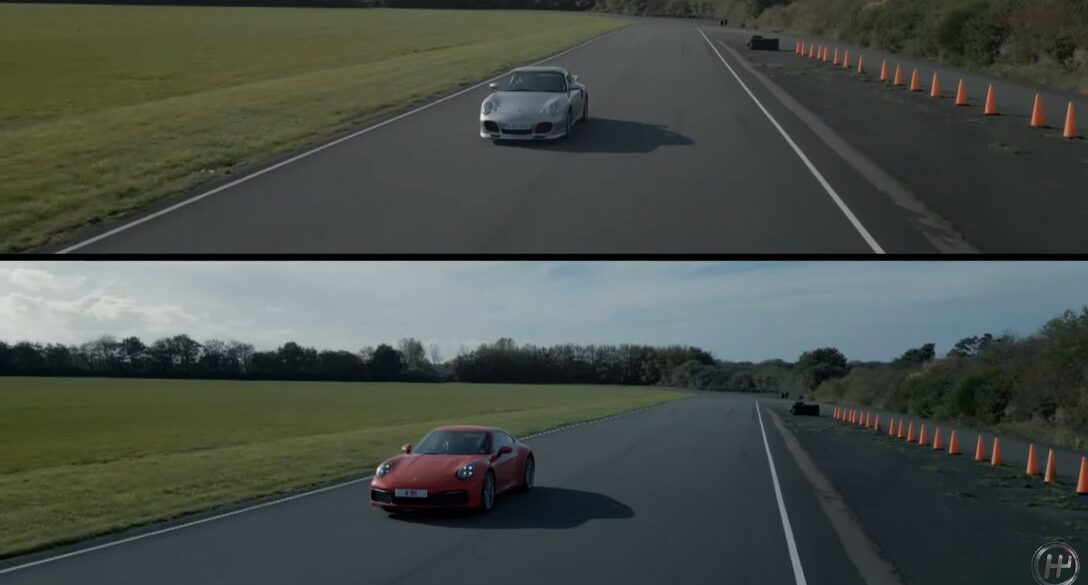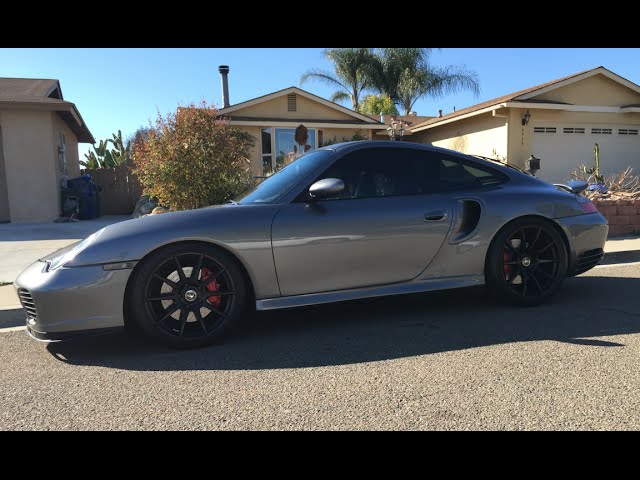A New Era for Porsche Performance “We are in the GT business,” said Porsche racing engineer Norbert Singer, “so we will make one.” That was in the summer of 1995 when Porsche responded to the revival of interest in GT-class racing and the challenge of the McLaren F1 by starting...
The new “Beyond Performance. 50 years of Porsche Turbo” special exhibition at the Porsche Museum is officially open. Over the next five and a half months, the Porsche Museum will present numerous cars and small exhibits in the way that they are perceived by sports car enthusiasts – as powerful...
Collecting Cars is currently offering a low mileage example of a 2004 Porsche 911 Turbo equipped with the optional X50 Performance Package. The optional X50 Performance Package gave the base Turbo larger K24 turbochargers and intercoolers, a revised ECU and a quad-pipe exhaust, raising the engine’s output from 415 to 450 bhp and...
Porsche introduced the turbocharged version of the Type 996 for the 2001 model year (late 2000 in Europe). Like the 996 GT3, the Turbo's engine was derived from the engine used in the 911 GT1. Like its predecessor, the 993 Turbo, it featured twin-turbos but now had a power output of 420 PS (309 kW; 414 hp). As of 2002, the X50 package would increase engine output to 444 hp. The 996 Turbo was available with a 6-speed manual transmission or an automatic (Tiptronic), driving power to all four wheels. This is a great great car.
No Subscription? You’re missing out Get immediate ad-free access to all our premium content. Get Started Already a Member? Sign in to your account here....
No Subscription? You’re missing out Get immediate ad-free access to all our premium content. Get Started Already a Member? Sign in to your account here....
No Subscription? You’re missing out Get immediate ad-free access to all our premium content. Get Started Already a Member? Sign in to your account here....
No Subscription? You’re missing out Get immediate ad-free access to all our premium content. Get Started Already a Member? Sign in to your account here....
No Subscription? You’re missing out Get immediate ad-free access to all our premium content. Get Started Already a Member? Sign in to your account here....
Introducing this new top-of-the-range model, Porsche is once again placing a 911 Turbo Cabriolet right at the top of the family after a break of 14 years: From 1987 - 1989 the Porsche 930, as the first Turbo was code-named within the Company, set the first milestone in the history of these outstanding open-air sports cars. With cylinders still featuring two valves each at the time, the 3.3-litre power unit driving the first Turbo Cabriolet offered maximum output quite unique at the time of 300 bhp or 221 kW. Acceleration from 0 to 100 km/h was in 5.2 seconds and the car had a top speed of 260 km/h or 161 mph.
No Subscription? You’re missing out Get immediate ad-free access to all our premium content. Get Started Already a Member? Sign in to your account here....
No Subscription? You’re missing out Get immediate ad-free access to all our premium content. Get Started Already a Member? Sign in to your account here....
No Subscription? You’re missing out Get immediate ad-free access to all our premium content. Get Started Already a Member? Sign in to your account here....
The optional X50 Performance Package gave the base Turbo larger K24 turbochargers and intercoolers, a revised ECU and a quad-pipe exhaust, raising the engine’s output from 415 to 450 bhp and maximum torque from 415 to 457 ft lbs. With power at 450 bhp @ 6000 rpm and torque of 457 ft lbs @ 4400 rpm, the X50 option is a monsters. Porsche engineers achieved the increase in power and performance through modifications to the Turbo charger, the change air cooler, the control units and exhaust system in particular. The base constructions of the manual and automatic transmissions were also improved.
No Subscription? You’re missing out Get immediate ad-free access to all our premium content. Get Started Already a Member? Sign in to your account here....
No Subscription? You’re missing out Get immediate ad-free access to all our premium content. Get Started Already a Member? Sign in to your account here....
No Subscription? You’re missing out Get immediate ad-free access to all our premium content. Get Started Already a Member? Sign in to your account here....
No Subscription? You’re missing out Get immediate ad-free access to all our premium content. Get Started Already a Member? Sign in to your account here....
This 2003 Porsche 911 (996) Turbo received a TechArt upgrade, which includes an enhanced engine, bodywork, and alloy wheels. Its 3.6-liter twin-turbocharged flat-six engine has been remapped, resulting in an impressive 530 horsepower output. The car is equipped with a five-speed Tiptronic S transmission that can be controlled using buttons...
The RUF Rturbo, based on the Porsche 996 Turbo, is available in configurations producing 520, 550, or 590 bhp, with the top-tier version delivering an impressive 830 Nm of torque. This remarkable performance is achieved through a combination of enhancements, including upgraded turbochargers, a meticulously engineered exhaust system, and re-mapped...
The 996 Turbo basking in the beauty of the Western Cape How our man, Richard Wiley, came to be the custodian of two Porsche 911s over a period of nearly nine months. Porsche Road & Race contributor, Richard Wiley, has spent many hours of his life in aeroplanes, travelling primarily...
Better, Or Worse Than Standard? I love the looks of the 996 generation 911 turbo, but the drive of them always left me a little disappointed. Today I am driving a TechArt modified 911 Turbo to see if this is one car which is improved with mods....
...
The new 911 991.2 Carrera 4S has pretty much the same spec as the 2003 911 996 Turbo, lets take a look....
Test Driving a Porsche 996 Turbo with 700 hp The Porsche 996 Turbo is often dismissed by many – with it’s strange headlight styling and underwhelming appearance it’s no suprise. However what if I told you it might be one of the best tuner cars ever? With an extremely overbuilt...
Porsche 911 Turbo 996 Review We review the 2002 Porsche 911 Turbo 996 and discuss the good and bad of this controversial generation. Many will complain that sports cars are too complicated and expensive today, and older vehicles make more sense. Are used supercars a good value 20 years later?...
Porsche 911 996 Turbo Values & Market Analysis Buying a Porsche 911 996 turbo? Then this is the video to watch. In this depreciation and buying guide of the Porsche 911 996 Turbo, I will show you how much the values changed in the last year and how much the...
Porsche 911 996 Turbo Review – Worth The Premium Over A C4S? Today I get to drive a car I’ve long lusted after – a 911 Turbo. My only experience of a Turbo so far was in a very heavily modified 993. The 996 has always been my favourite generation...
Doug DeMuro Reviews the 996 Turbo The Porsche 911 Turbo (996) is an amazing bargain. Today I’m reviewing the 996 Turbo, and I’m going to show you all the quirks and features of one of the best bargain 911 models. Then I’m going to drive the 996 Turbo and show...
As part of Fifth Gear’s 20th Anniversary, they pit the 20-year-old Porsche 911 Turbo (996) against the 911 Carrera (992)....
One Take in a Tuned Porsche 996 Turbo X50 The Porsche 996 has sustained a long reputation for reliable speed, and with the recent spike in 80’s Porsche Turbo’s, it now has a new reputation: the cheapest Porsche Turbo you can buy. Nyx bought this one in San Diego the...
POV Test Drive of Crazy Tuned 996 Turbo Wear headphones! The audio in this video was recorded with in-ear binaural microphones. With headphones or earbuds on, you’ll feel like you’re actually sitting in the driver’s seat....
Porsche 996 Turbo X50 Review 2004 Porsche 911 996 Turbo X50. The X50 package was later replaced by the Turbo S, which added PCCB at the end of the 996 chassis life....
The Porsche 996 Turbo Is An Under-appreciated Sports Car & Shouldn’t Be I haven’t got to spend much time behind Porsche’s on this channel – so I was very excited to get behind the wheel of a 500hp manual Turbo! The 996 for a very long time was neglected as...


